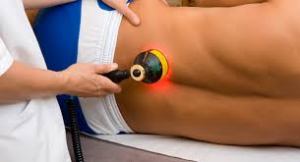“Why Do I Have Back Pain?” is a very common thought among adults. Out of all the potential ailments a person may face, back pain is one of the most common physical complaints found throughout the world’s entire population. In fact, about 80% of adults will experience (lower) back pain at some point during their lifetime. Even more stunning is that 25% of adults have reported experiencing back pain just within the last three months! Given these types of statistics, it’s worthwhile to learn about this common ailment and more importantly, what to do to resolve it as quickly as possible.
Causes of Lower Back Pain
Some people avoid seeking medical care for their lower back pain because they assume they will have to undergo surgery. However, even though a person may be experiencing back pain from a condition such as a herniated disc, a pinched nerve, or even spinal stenosis, surgery is typically the last resort. Even other medical conditions that may be responsible for back pain such as a bulging disc, or SI joint pain (the point where the spine meets the hip bone) do not necessarily lead to surgery. In fact, back pain can result from a multitude of issues including poor posture, footwear that does not provide the proper support, weak muscles from lack of exercise, or a simple muscle strain from overuse.
While some minor bouts of back pain may only last a few days, it’s important to seek medical attention for any back pain that does not go away with simple treatments such as rest, a heating pad, and some NSAIDs. Chronic or repeated bouts of back pain may be related to the spine, but pain around the spinal area could also be a symptom of a kidney problem, prostate issues, pregnancy, a bladder condition, or a UTI (urinary tract infection). Although rare, back pain could also stem from a tumor in or around the spine.

How Physical Therapy Can Help
Depending upon the diagnosis a patient receives from their physician, they may have been given a prescription for a series of sessions with a professional physical therapist. Even with the more serious spinal issues such as spinal stenosis, spinal trauma, or a bulging or herniated disc, a physical therapist may be able to provide immense help. If a serious issue is not the cause of a person’s back pain, it still hurts and patients suffering from uncomfortable pain levels still want/need help to resolve it. In these cases, a PT can still help resolve a patient’s issues even if the cause of their back pain stems from more minor issues such as poor posture, weak muscles (lack of fitness), or ill-fitting footwear.

Typically a physical therapist will first start with treatments designed to meet a patient’s immediate need for a reduction in their pain level. Some of these treatments may include the application of heat, ultrasound and/or laser therapy, and spinal manipulation techniques (manual therapy) which can address any disc or vertebrae misalignment. Physical therapists will then introduce gentle stretching exercises designed to support the current range of motion in the affected area, with the goal of gradually increasing flexibility to regain full range of motion. Eventually, a physical therapist will also introduce strengthening exercises. Strong muscles go a long way to help provide the proper support for spinal structures, taking away a significant portion of the burden placed on the spine from poor posture, weak muscles, etc. Physical therapists can also recommend supportive footwear, along with techniques to maintain good posture while sitting, standing, and walking.

Summary
If you or someone you know is suffering from chronic or repeated bouts of back pain, we can help! Please contact Cawley Rehab at cawleyptfrank@gmail.com or call us at 570-208-2787.

